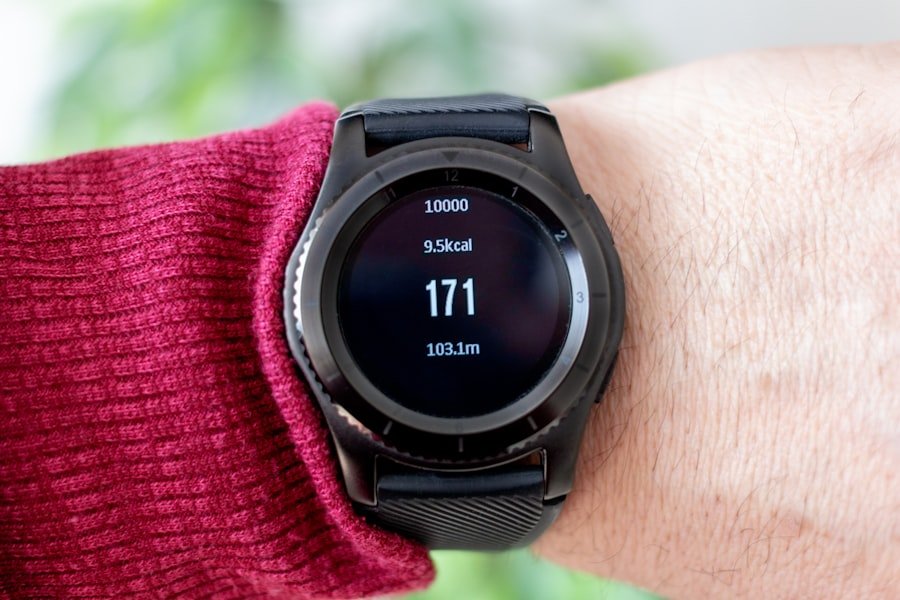Wearable technology has emerged as a transformative force in various sectors, including healthcare, fitness, and entertainment. However, its impact on the business landscape is equally profound and multifaceted. Defined as electronic devices that can be worn on the body, these technologies often incorporate sensors and software to collect data, monitor activities, and facilitate communication.
The integration of wearable technology into business practices is not merely a trend; it represents a significant shift in how organisations operate, engage with employees, and interact with customers. As businesses strive for greater efficiency and innovation, the adoption of wearables is becoming increasingly prevalent. The rise of wearable technology in the business realm can be attributed to several factors, including advancements in technology, the proliferation of the Internet of Things (IoT), and a growing emphasis on data-driven decision-making.
Companies are now leveraging wearables to enhance productivity, improve employee well-being, and streamline operations. From smartwatches that track employee performance to augmented reality glasses that assist in training and development, the applications of wearable technology are diverse and continually evolving. This article delves into the myriad ways wearable technology is reshaping the business environment, exploring its benefits, types, challenges, and future trends.
Summary
- Wearable technology in business refers to devices that can be worn by employees to enhance productivity and efficiency in the workplace.
- The benefits of wearable technology in business include improved communication, increased safety, and enhanced data collection and analysis.
- Different types of wearable technology for business use include smartwatches, fitness trackers, augmented reality glasses, and biometric sensors.
- Wearable technology is changing the workplace by enabling remote work, improving employee health and wellness, and enhancing the overall employee experience.
- Challenges and concerns with wearable technology in business include data privacy and security, employee resistance, and potential distractions in the workplace.
- Implementing wearable technology in business requires careful planning, employee training, and clear policies to address privacy and security concerns.
- Future trends in wearable technology for business include the integration of artificial intelligence, advanced biometric sensors, and more seamless connectivity with other business systems.
- In conclusion, the impact of wearable technology on business is significant, with the potential to revolutionize the way employees work and businesses operate.
The Benefits of Wearable Technology in Business
The advantages of incorporating wearable technology into business operations are manifold. One of the most significant benefits is the enhancement of employee productivity. Wearables can provide real-time data and insights that enable employees to make informed decisions quickly.
For instance, smartwatches equipped with task management applications allow employees to receive notifications about deadlines or meetings without needing to check their phones or computers constantly. This seamless integration of information helps reduce distractions and keeps employees focused on their tasks. Moreover, wearable technology can significantly improve employee health and well-being.
Devices such as fitness trackers encourage employees to engage in physical activity by monitoring their steps, heart rate, and overall fitness levels. Companies that promote health and wellness through wearables often see a reduction in absenteeism and healthcare costs. For example, a study conducted by the American Journal of Health Promotion found that organisations implementing wellness programmes that included wearable devices reported a 25% decrease in healthcare costs over three years.
This not only benefits employees but also enhances the overall productivity of the organisation.
Different Types of Wearable Technology for Business Use

Wearable technology encompasses a wide range of devices tailored for various business applications. Smartwatches are among the most popular wearables, offering functionalities such as notifications, calendar management, and health tracking. These devices can be particularly beneficial in fast-paced environments where quick access to information is crucial.
For instance, in retail settings, employees can receive real-time inventory updates or customer requests directly on their wrists, allowing for more efficient service delivery. Another category of wearable technology gaining traction is augmented reality (AR) glasses. These devices overlay digital information onto the physical world, providing users with enhanced visualisation capabilities.
In industries such as manufacturing and logistics, AR glasses can assist workers by displaying assembly instructions or navigation routes directly in their line of sight. This hands-free approach not only improves accuracy but also reduces the time spent searching for information or instructions. Companies like Boeing have successfully implemented AR technology in their assembly processes, resulting in significant reductions in error rates and increased efficiency.
How Wearable Technology is Changing the Workplace
The introduction of wearable technology is fundamentally altering workplace dynamics and culture. One notable change is the shift towards a more data-driven approach to management. With wearables collecting vast amounts of data on employee performance and health metrics, managers can make informed decisions based on empirical evidence rather than intuition alone.
This data-centric approach fosters a culture of transparency and accountability, as employees are aware that their performance is being monitored and evaluated. Additionally, wearables are facilitating improved communication and collaboration among teams. Devices equipped with communication tools enable employees to stay connected regardless of their physical location.
For instance, remote workers can participate in virtual meetings using smart glasses that provide a hands-free experience while allowing them to interact with colleagues seamlessly. This level of connectivity not only enhances teamwork but also supports a more flexible work environment where employees can thrive regardless of their geographical constraints.
Challenges and Concerns with Wearable Technology in Business
Despite the numerous benefits associated with wearable technology, several challenges and concerns must be addressed before widespread adoption can occur. One primary concern revolves around data privacy and security. Wearable devices often collect sensitive information about employees, including health data and location tracking.
If this data is not adequately protected, it could lead to breaches of privacy and potential legal ramifications for organisations. Companies must implement robust security measures to safeguard this information and ensure compliance with data protection regulations. Another challenge lies in employee acceptance and engagement with wearable technology.
While some individuals may embrace the use of wearables for productivity enhancement, others may view them as intrusive or an invasion of privacy. It is crucial for organisations to foster an environment where employees feel comfortable using these devices without fear of constant surveillance. Providing clear communication about the purpose of wearables and how they will benefit both employees and the organisation can help alleviate concerns and encourage adoption.
Implementing Wearable Technology in Business

The successful implementation of wearable technology within an organisation requires careful planning and consideration. First and foremost, businesses must identify specific use cases that align with their goals and objectives. This could involve assessing areas where productivity could be improved or where employee health initiatives could be enhanced through wearables.
By establishing clear objectives, organisations can select the most appropriate devices and applications that will deliver tangible results. Training and support are also critical components of effective implementation. Employees must be adequately trained on how to use wearable devices to maximise their potential benefits.
This includes understanding how to interpret data collected by the devices and how to integrate this information into their daily workflows. Additionally, ongoing support should be provided to address any technical issues or concerns that may arise during usage. By investing in training and support, organisations can ensure a smoother transition to wearable technology adoption.
Future Trends in Wearable Technology for Business
As technology continues to advance at an unprecedented pace, the future of wearable technology in business looks promising. One emerging trend is the integration of artificial intelligence (AI) into wearable devices. AI-powered wearables can analyse data in real-time, providing users with actionable insights tailored to their specific needs.
For example, a smart fitness tracker could not only monitor an employee’s physical activity but also offer personalised recommendations for improving their health based on their unique patterns. Another trend is the increasing focus on sustainability within wearable technology development. As businesses become more environmentally conscious, there is a growing demand for wearables made from sustainable materials that minimise environmental impact.
Companies are exploring ways to create devices that are not only functional but also eco-friendly, aligning with broader corporate social responsibility goals.
The Impact of Wearable Technology on Business
The integration of wearable technology into business practices is reshaping how organisations operate and interact with their employees and customers alike. With benefits ranging from enhanced productivity to improved employee well-being, wearables are proving to be invaluable tools in today’s fast-paced business environment. However, challenges such as data privacy concerns and employee acceptance must be navigated carefully to ensure successful implementation.
As businesses continue to explore the potential of wearable technology, it is clear that this trend will only grow stronger in the coming years. The convergence of AI, sustainability initiatives, and innovative applications will further enhance the capabilities of wearables in business contexts. Ultimately, those organisations that embrace this technological evolution will likely find themselves at a competitive advantage in an increasingly digital world.
Wearable technology in business is revolutionising the way companies operate and interact with their customers. From smartwatches to fitness trackers, these devices are changing the landscape of business operations. In a related article on Roadmap for Accelerating Your Business Growth, the importance of staying ahead of the curve and embracing new technologies is highlighted. By incorporating wearable technology into their business strategies, companies can streamline processes, improve efficiency, and ultimately drive growth.
FAQs
What is wearable technology in business?
Wearable technology in business refers to the use of devices that can be worn by employees to enhance productivity, efficiency, and safety in the workplace. These devices can include smartwatches, fitness trackers, augmented reality glasses, and other wearable gadgets.
How is wearable technology used in business?
Wearable technology is used in business to track employee health and fitness, improve communication and collaboration, enhance safety in hazardous work environments, and streamline business processes. It can also be used for access control, time tracking, and monitoring employee performance.
What are the benefits of using wearable technology in business?
The benefits of using wearable technology in business include improved employee productivity, enhanced safety and security, better communication and collaboration, real-time access to information, and the ability to collect and analyse data for business insights.
What are some examples of wearable technology in business?
Examples of wearable technology in business include smartwatches for receiving notifications and accessing business apps, fitness trackers for monitoring employee health and wellness, augmented reality glasses for hands-free access to information, and smart clothing with embedded sensors for tracking movement and posture.
What are the potential challenges of implementing wearable technology in business?
Challenges of implementing wearable technology in business can include concerns about data privacy and security, employee resistance to using new technology, the need for training and support, and the cost of investment in the devices and infrastructure. It is important for businesses to address these challenges when adopting wearable technology.
